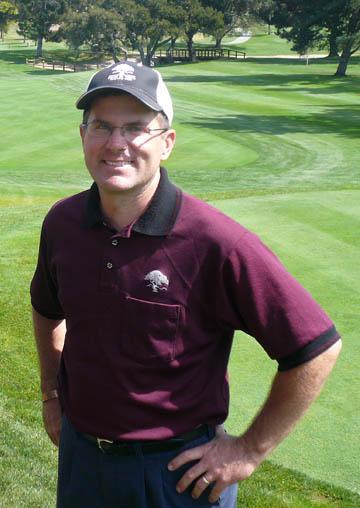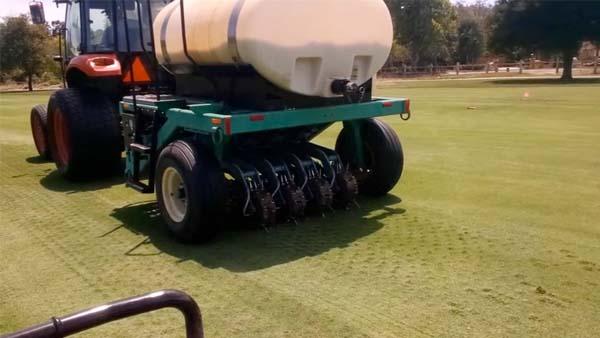
Doug Ayres began looking for ways to conserve water at Corral de Tierra Country Club long before California Gov. Jerry Brown told him he had to. In fact, he's been seeking ways to make every drop count since he arrived 10 years ago at the course in Corral de Tierra, California.
Located just a few miles east of the Monterey Peninsula, Corral de Tierra is in an arid canyon where temperatures can exceed those on the coast by 20 or 30 degrees or more. Conserving water there was important even before the state became consumed by a record drought that caused Brown to implement 25 percent reductions statewide.
Ayres, encapsulated his water-saving efforts in a 2:24 video that was named the winning entry in the Aquatrols-TurfNet Smart Water Management Video Challenge.
"Smart water management is not a one-time, one-step, one-and-done program," Ayres says in his winning video. "It is an ongoing multifaceted commitment to use water wisely while providing the best-possible playing conditions."
That's not always so easy nowadays in California, where the spigot hasn't quite been turned off, but the amount of water coming out of it isn't what it used to be.
Runner-up in the contest sponsored by Aquatrols was Jim Alwine of Bernardo Heights Country Club in San Diego. Alwine's video highlighted a massive turf-reduction program that has helped save water while improving aesthetics. Third-place winner Matt Gourlay, CGCS, focused on the challenges he faces at Colbert Hills Golf Course in Manhattan, Kansas, where wind is a major factor.
Prizes include a slot on this year's TurfNet members' trip to Ireland, a DJI Phantom 2 Vision+ Quadcopter with FPV HD video camera and a GoPro HERO4 camera.
Ayres said providing a good product for his members at Corral de Tierra requires three things: infrastructure, good old-fashioned hard work and radically creative innovation.
Saving water has been accomplished through several practices, including tweaking the irrigation system through improved head spacing, pump station upgrades, head replacement and the use of new and improved nozzles.
Other innovations at Corral de Tierra include use of subsurface drip irrigation around bunkers for the past eight years, collecting and reusing runoff water, use of wetting agents and reductions in irrigated turf.

For the past eight years, Ayres also has been using hydrophilic synthetic polymers that increase the soil's water-holding capacity.
Synthetic, water-absorbing polymers (think baby diapers) represent old technology that has been around for decades and in use at Corral de Tierra for the past eight years.
Initially, Ayres used them under sod and around bunkers during construction projects, broadcast them over wide areas and used an aerator to work them into the soil or injected them by hand. With the need to use them on a broader scale, they now are applied directly to the turf and worked into the soil through a spiking process, along with fertilizers and other additives, at a rate of 2 acres per hour.
"The numbers don't lie," Ayres said. "A 50-percent reduction in irrigation in all of the areas that we have applied the polymers has been realized. The savings in electricity alone will pay for the application and the additives. This has proven to be the best way to reduce irrigation use and not only keep quality high, but improve it. Infrastructure, good old-fashioned hard work and radically creative innovation are all part of our smart water management program."

